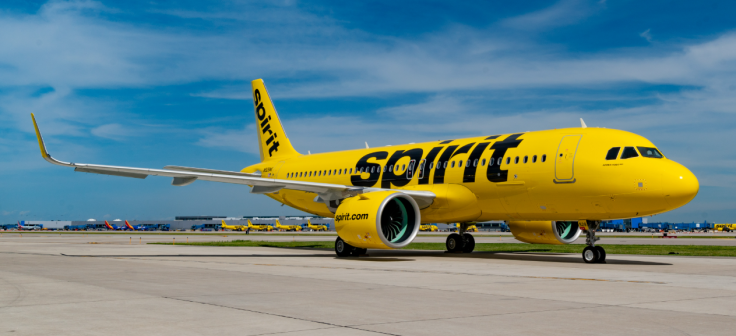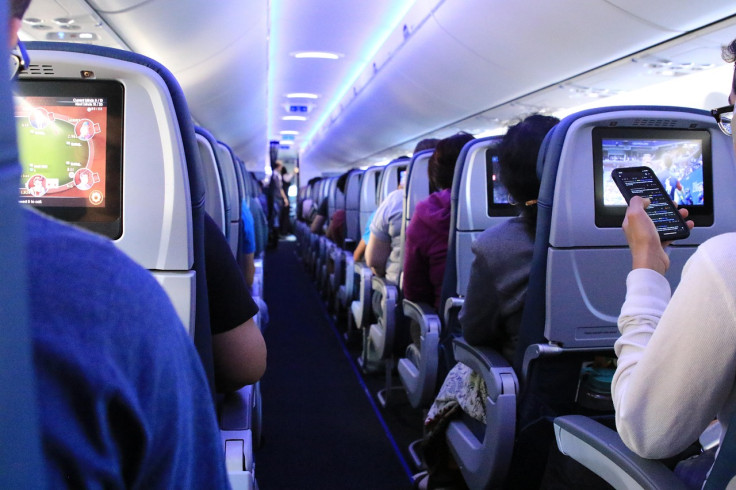Aviation Fears for 2025 Grow as Spirit Airlines Appears to Fly Toward Hurricane Erin – Here's the Truth
Hurricane Erin reached Category 5 strength after the flight incident but has since weakened to a Category 2 storm.

Spirit Airlines has found itself in hot water across social media after one of its planes appeared to fly directly into Hurricane Erin on Monday, when the storm was a powerful Category 4.
According to flight tracking site Flightradar24, Flight NK2298, en route from Philadelphia to San Juan, Puerto Rico, took a course that seemingly sliced through the heart of the hurricane. The platform shared an image of the flight path on X (formerly Twitter), with the caption, 'Did Spirit take up the Hurricane Hunter mission?'
The timing caused a stir. Hurricane Erin was thrashing the Atlantic with winds above 130 mph and already battering parts of the Caribbean. Some on social media took aim at the budget airline's reputation, with one user joking, 'They're going to charge extra for the hurricane experience.'
The situation, however, which turns out to be less dramatic, has sparked broader questions about aviation safety during extreme weather.
Airline Defends Its Pilots' Judgment
Spirit Airlines responded swiftly to growing criticism, insisting that safety had not been compromised.

'Safety is always our top priority,' the airline said in a statement to The National Desk. 'Our Pilots followed procedures and Air Traffic Control (ATC) instructions while en route to San Juan. Our Operations Control Center closely tracks weather systems and works with our Pilots and ATC to determine flight paths that safely navigate around or above adverse weather conditions.'
Despite the flight path shown by Flightradar24, another tracking service, FlightAware, recorded a different trajectory, one that skirted the storm rather than entering its most dangerous zones. A similar flight taken two days later followed a noticeably wider route around the hurricane.
Experts Say High-Altitude Flights Can Be Safe
Some aviation experts have since clarified that commercial aircraft can safely operate near hurricanes under the right conditions.
Professor John Hansman of MIT told Newsweek that flying through a hurricane is not unusual. 'Particularly if you are above the tops of the clouds and the turbulent layer. The winds are not a problem at altitude... It is more hazardous to land or take off in those conditions where there are high winds and rain.'

His remarks point out that while flying through a hurricane sounds alarming, context matters. Commercial jets often travel through strong upper-level winds, including those in jet streams, without issue.
Meanwhile, experts believe that the primary risks, which are turbulence, wind shear, and lightning, are more pronounced at lower altitudes.
Spirit's Troubles Go Beyond Turbulence
The public backlash and the social media treatment that the airline has been receiving have a lot to do with its infamous history as well.
Spirit Airlines flew through a whole hurricane and has not crashed.
— Tanaya (@TanayaRee) August 22, 2025
I want you to know that you are blessed even when you are on a budget because wtf. SPIRIT airlines indeed.
Spirit filed for bankruptcy in late 2024 after years of complaints about unreliable service, added fees, and poor customer experience. Though known for low base fares, the carrier has faced long-standing criticism over excessive charges for basics like seat selection and cabin baggage.
The hurricane incident added more fuel to the fire. Even if no real danger was present, public perception of recklessness is something the airline can ill afford.
What's Next For Hurricane Erin
Meanwhile, Hurricane Erin reached Category 5 strength after the flight incident but has since weakened to a Category 2 storm. According to reports, it's not expected to make landfall in the US, though its proximity has created dangerous surf, rip currents, and flooding along parts of the East Coast.
North Carolina has already declared a state of emergency in anticipation of coastal damage. Waves as high as 20 feet are expected along some stretches.
Though flight NK2298 reportedly never entered the storm's violent core, its bold move has surely reignited discussions around aviation safety during such extreme weather conditions.
© Copyright IBTimes 2025. All rights reserved.



















